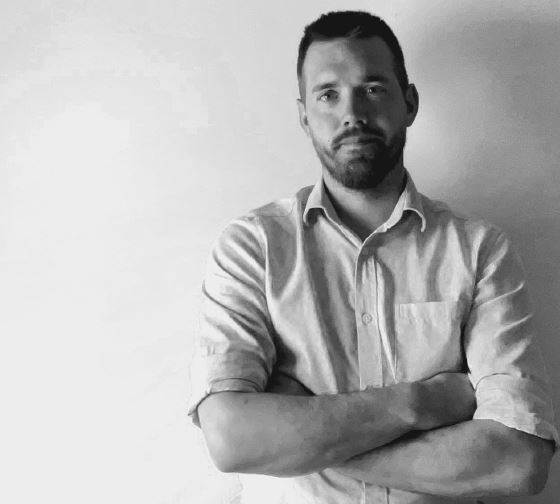This blog is based on an original research article. The views expressed are those of the author(s) and reviewer(s) at the time of publication.

This blog is written by Jamie Miles (Clinical Research Fellow, University of Sheffield), who specialises in both ambulance service and emergency department care, and is currently researching how health data and technology can be used to meet the care needs of patients.
Paramedics could play a key role in reducing hospital admissions, which is one of the Department of Health and Social Care’s priorities. Previous work suggests that, with appropriate support, up to 1 in 3 ambulance journeys to A&E could be avoided. This could reduce ambulance handover queues and NHS backlogs.
But it can be difficult for us to decide who to take to A&E. Paramedics manage complex and varied problems, including severe mental illness. We convey people who need emergency hospital care but also those with non-emergency problems such as a mild infection. When treating an older, frail patient, with many health problems, how do we decide what care they need at that precise moment? Even if I am fairly confident that someone’s condition is not serious, I may take them to A&E, just in case. We often transport more people than necessary.
Artificial intelligence (AI) could be an excellent tool to support our work, and help us decide that someone can safely stay out of hospital. With this in mind, my research team set out to develop a tool to predict which ambulance patients do not need to attend A&E. Existing transport decision tools help paramedics identify the people most likely to need emergency care. They are less helpful in deciding who does not need to attend A&E; evidence suggests they are no better than clinicians’ decision-making.
What’s new?
We considered whether routinely collected data could be used to predict who does not need to attend A&E. The research team assessed more than 101,000 linked ambulance and A&E care records from Yorkshire between July 2019 and February 2020. Almost 1 in 10 (7%) did not need to attend A&E. Treatment could have been provided in a non-emergency setting, followed by discharge home or to GP care.
From 215 possible variables in the dataset, we selected 19 predictors, including mobility, the paramedic’s impression of what mental health problem someone is having, and minor cuts and bruising. We used these predictors to create a computer model to identify people who did not need to attend A&E.
A proof of concept study suggested that the model could predict which people did not need to attend A&E, 8 times out of 10. It did not over- or under-predict the number of people that did not need to attend A&E.
Interestingly, lack of mobility was one of the strongest predictors of a person’s need for A&E care. By contrast, people with severe mental illness did not typically need emergency care. They could often be treated outside of A&E, but it was sometimes unsafe to leave them at home. They needed to wait at A&E until they could receive care elsewhere.
People with allergic reactions, minor cuts and bruises, and back pain (with no fall or injury) could often be safely treated on site, according to the model.
The computer model was fair and worked just as well on people of different ages, genders, and ethnicities, for example. It was also accurate across a range of areas including rural, urban, and coastal.
What’s next?
This early study therefore suggested that a tool based on routinely-collected data could help paramedics distinguish between those with urgent and non-urgent need. However, the tool is not ready to be used in practice. Several steps are missing. It has not been tested in a real-world setting. We need a firmer, widely-agreed definition of who does not need to attend A&E. And future AI studies need faster access to high quality data, without compromising governance or safety. It took us years to get a dataset of linked healthcare data for this study.
Our computer model showed us the art of the possible, but we think we can do more. Instead of refining this model, we feel it will be more helpful to develop a decision-making tool to allow paramedics to predict what care people need (emergency or otherwise). So, for example, what care does someone with severe mental illness need?
A model that predicts people’s care needs could inform paramedics’ decision-making – and the design of the ambulance service. We are not there yet, but we think that over the coming years, AI-based tools will help us keep people out of hospital, and stay safely at home.
You may be interested to read
This blog is based on: Miles J, and others. The Safety INdEx of Prehospital On Scene Triage (SINEPOST) study: The development and validation of a risk prediction model to support ambulance clinical transport decisions on-scene. PLOS One 2022;17: e0276515.
Research outlining a modified definition of an avoidable attendance used in this study: O'Keeffe C, and others. Characterising non-urgent users of the emergency department (ED): A retrospective analysis of routine ED data. PLOS One 2018;13: e0192855.
A review of existing research on models that predict the need for emergency care: Miles J, and others. Using machine-learning risk prediction models to triage the acuity of undifferentiated patients entering the emergency care system: a systematic review. Diagnostic and Prognostic Research 2020;4: 1 – 12.
Funding: This study was supported by a grant from the Health Education England-NIHR Integrated Clinical and Practitioner Academic Programme.
Conflicts of Interest: The study authors declare no conflicts of interest.
Disclaimer: Summaries on NIHR Evidence are not a substitute for professional medical advice. They provide information about research which is funded or supported by the NIHR. Please note that the views expressed are those of the author(s) and reviewer(s) at the time of publication. They do not necessarily reflect the views of the NHS, the NIHR or the Department of Health and Social Care.